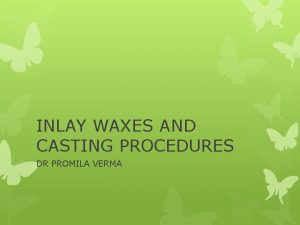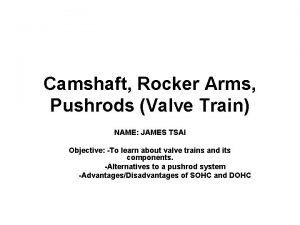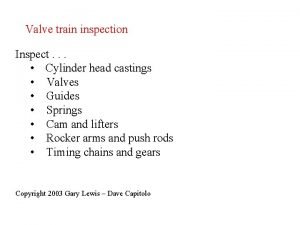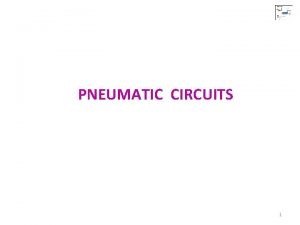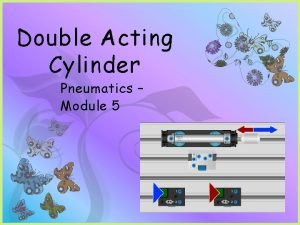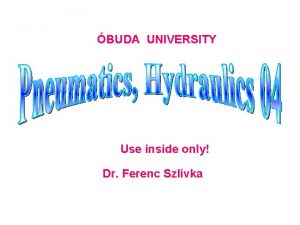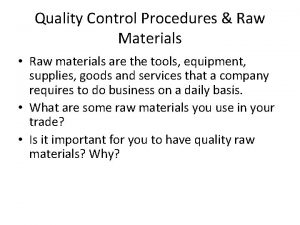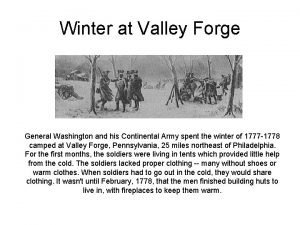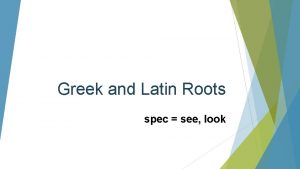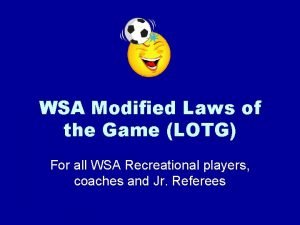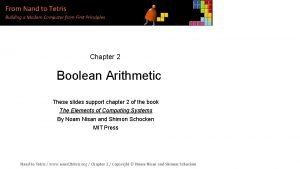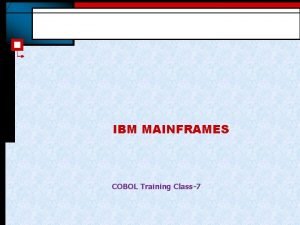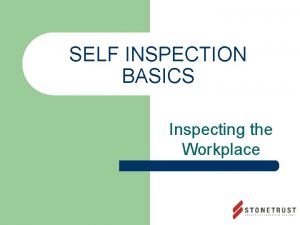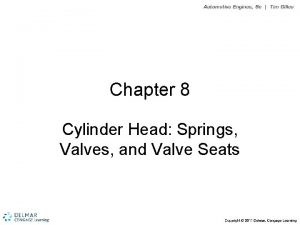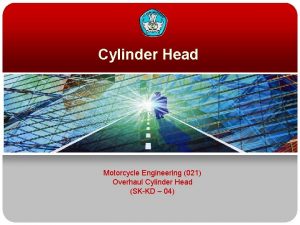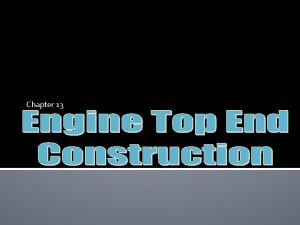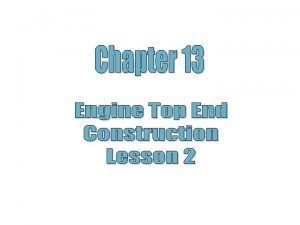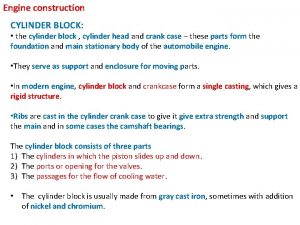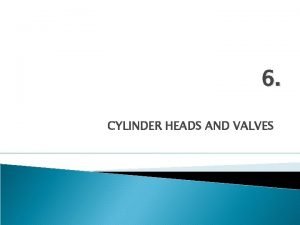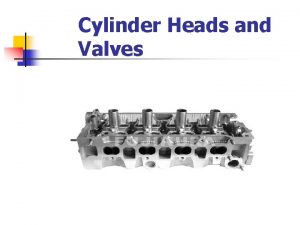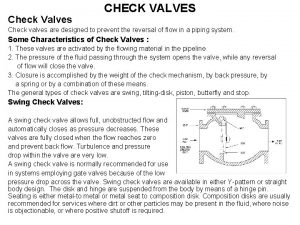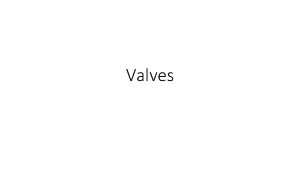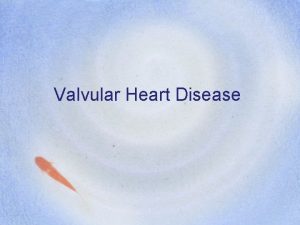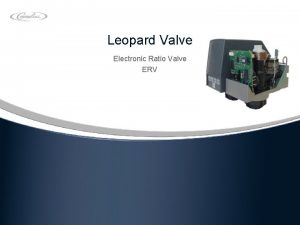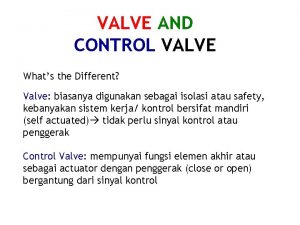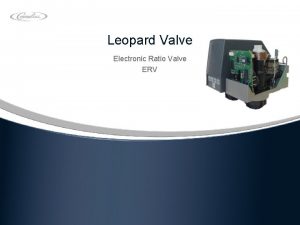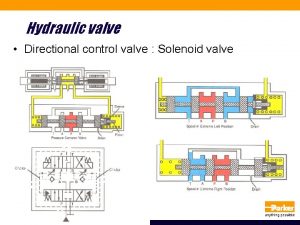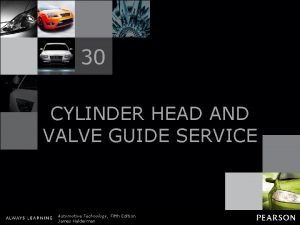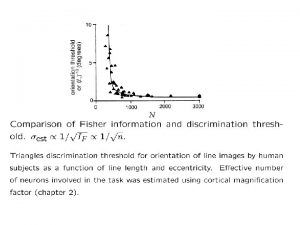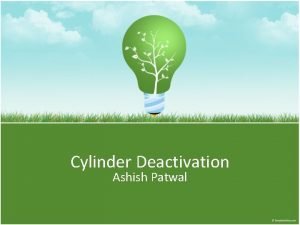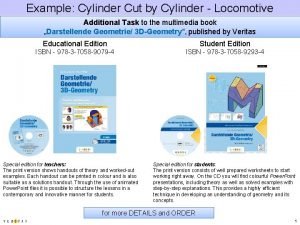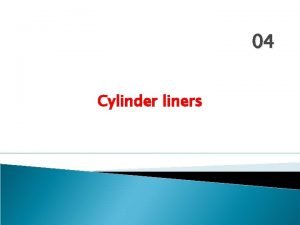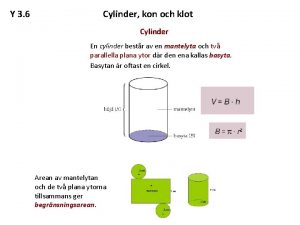Valve train inspection Inspect Cylinder head castings Valves






















- Slides: 22

Valve train inspection Inspect. . . • Cylinder head castings • Valves • Guides • Springs • Cam and lifters • Rocker arms and push rods • Timing chains and gears Copyright 2003 Gary Lewis – Dave Capitolo

Valve train inspection Cylinder head castings • Visual inspection – Anything inconsistent • Gasket surfaces – Fire rings, water ports • Crack detection – Magnaflux, dye penetrant • Flatness –. 004” Go/No Go on deck surfaces • Top side of OHC – Cam rotation

Valve train inspection Valves • Stem wear -. 001” to. 0015” • Margins – 1/32” or ½ new thickness • Necking on stems • Tulip valve heads • Straightness – When refacing

Valve train inspection Valves • Keeper groove wear • Stem tip wear caused by rotator failure

Valve train inspection Valve burning • Starts with unequal cooling • Warpage, then burning

Valve train inspection Valve springs • Pressure – 10% of spec in closed position • Square – Within 1/16” for each 2” of length • Pitting & corrosion

Valve train inspection Valve guides • Measure wear limit: Stem diameter + max clearance • Valve rock is not the same as guide clearance! Rock is more than clearance

Valve train inspection Valve guide knurling limits • Measure stem diameter. Is it within limits? • Set telescoping gauge: stem dia. +. 002” +. 004” • Use as “Go/No Go” • If wear is excessive, replace guide or use OS stem

Valve train inspection Rocker arm studs • Threads • Nicks on the side of studs • Height within 1/32”

Valve train inspection Push rods • Straightness, length, & end wear • Some signs of wear on sides may be normal • Push rod guide holes in head

Valve train inspection Rocker arms • Wear on faces & push rod sockets • Wear in adjusting screws • Stamped rockers cannot be refaced • Forged, cast, & fabricated rockers can be refaced

Valve train inspection Rocker shafts • Cleaning is critical for normal oiling • Check direction of oil holes

Valve train inspection Cams and lifters • Inspect lifters for rotation • Inspect cam lobes for wear

Valve train inspection What makes lifters rotate? • Crowned lifter base • Tapered cam lobe • Taper is. 001” to. 002”

Valve train inspection More cam & lifter wear • Edge wear on cam lobes • Pitting on lifter bases

Valve train inspection More cam & lifter wear • Good pattern is a narrow path near center of lobe • Wear may extend across full width of lobe

Valve train inspection Cam lobe wear limits • Measure cam lift of all lobes • Variations should be less than. 005” for exh. or int.

Valve train inspection Cam journal wear • Measure journal diameters with micrometer • Check cam bore on aluminum heads for wear

Valve train inspection Lifter testing • Test predetermined leak down • Finds excessive clearance and check valve failure • Lash compensators (OHC) checked the same way

Valve train inspection Natural gas valve trains • • • No lubrication in fuel Valve rotators should be removed Recommended valve material - Inconel alloy Recommended seat material – cobalt, non-magnetic Recommended seal material - Viton umbrella seals

Valve train inspection Timing components • OHV timing chain slack – Maximum ½” • Timing gear backlash – Maximum. 006”

Valve train inspection Timing components • OHC timing chain slack – Controlled by tensioners • Worn assemblies rattle at start up and at idle
 Ellwood engineered castings
Ellwood engineered castings Indirect lost wax casting
Indirect lost wax casting Engineered castings
Engineered castings Pushrod valve train
Pushrod valve train Difference between proportional valve and servo valve
Difference between proportional valve and servo valve Inspection
Inspection Rto cylinder rotary valve
Rto cylinder rotary valve Rto cylinder rotary valve
Rto cylinder rotary valve Single acting cylinder hydraulic circuit
Single acting cylinder hydraulic circuit Double acting cylinder operation
Double acting cylinder operation Pneumatic systems
Pneumatic systems Inspect rx
Inspect rx Quality control of raw materials in food production
Quality control of raw materials in food production Washington and lafayette inspect the troops at valley forge
Washington and lafayette inspect the troops at valley forge Inspect a workbook for compatibility issues
Inspect a workbook for compatibility issues Cognex ether inspect
Cognex ether inspect Latin roots spec
Latin roots spec Direct free kick signal
Direct free kick signal Nand to tetris
Nand to tetris Cobol examine
Cobol examine Posterior lung fields
Posterior lung fields Self inspect
Self inspect Inspect uniformity of skin color rationale
Inspect uniformity of skin color rationale

